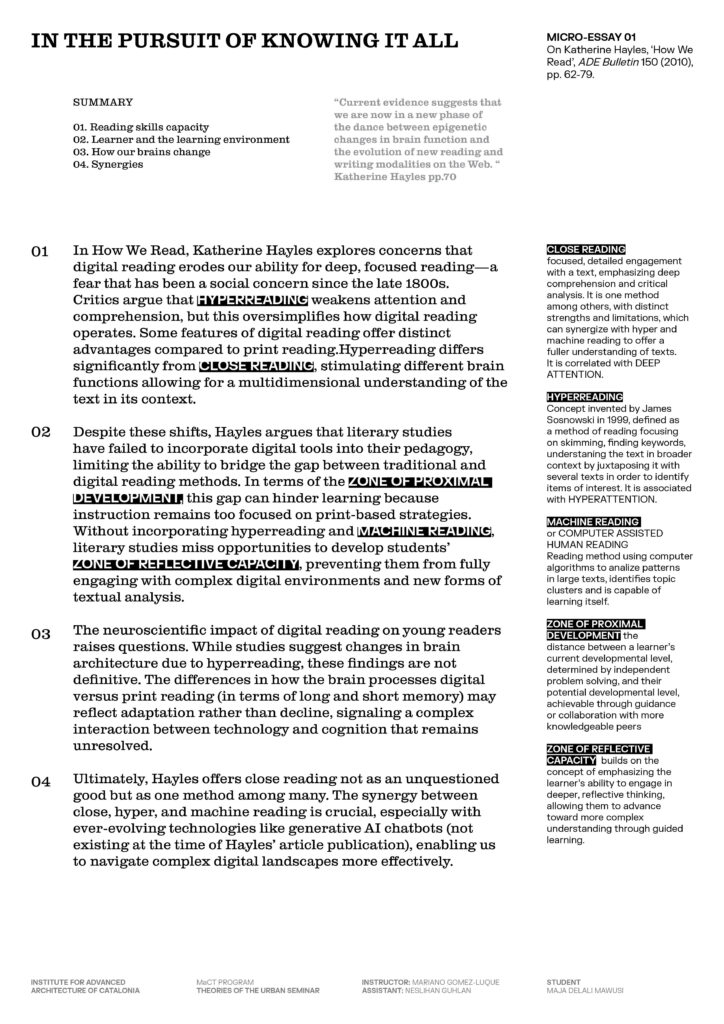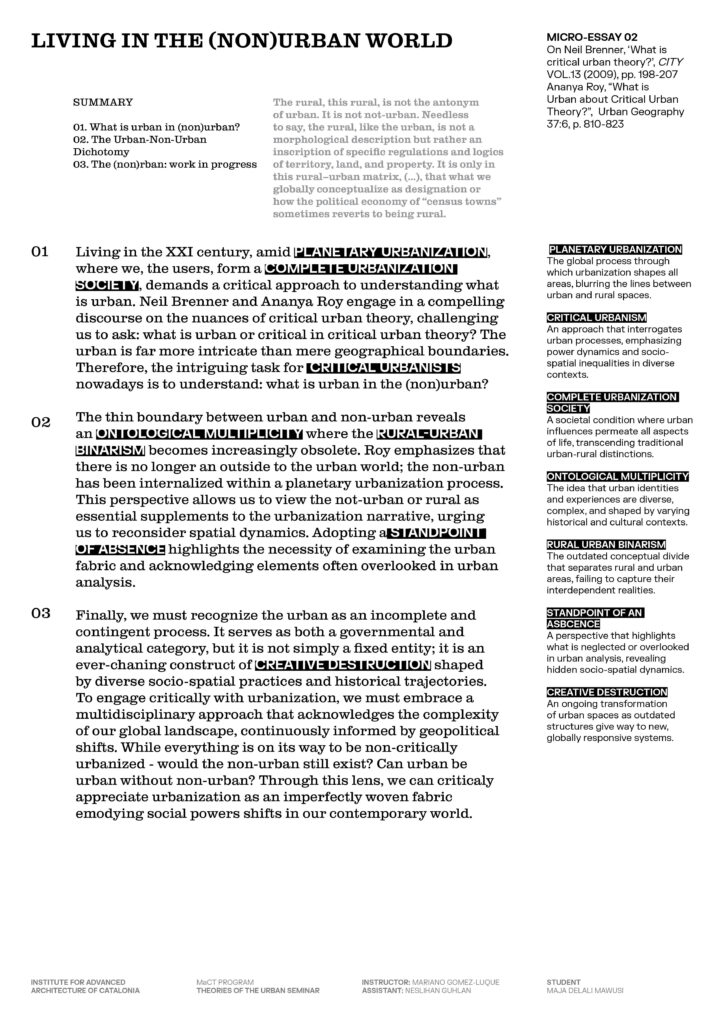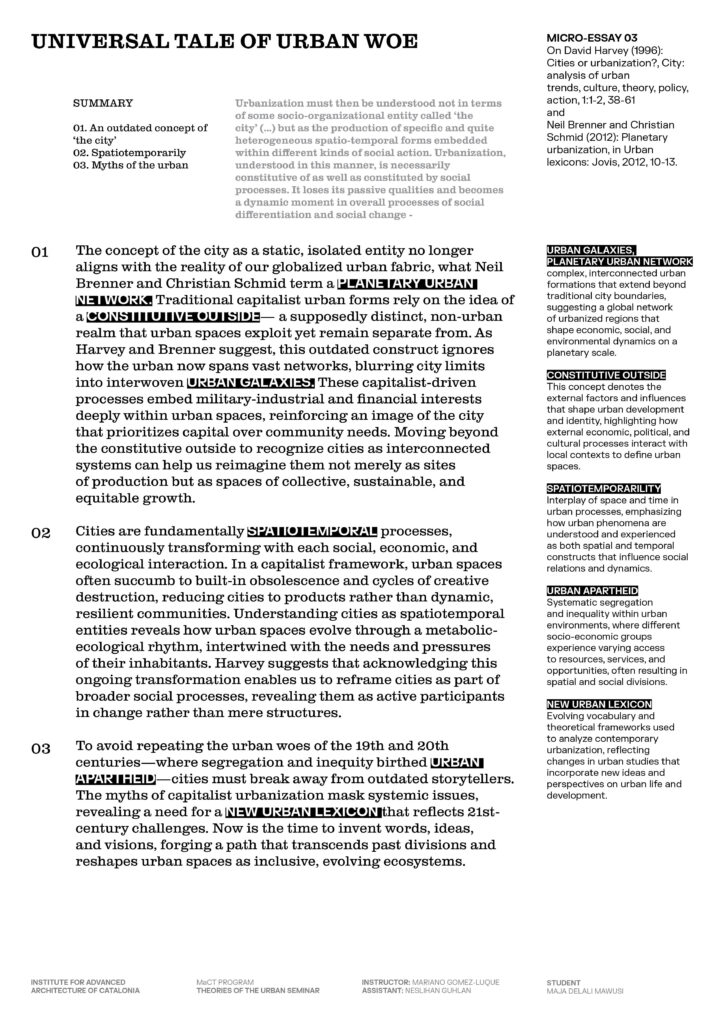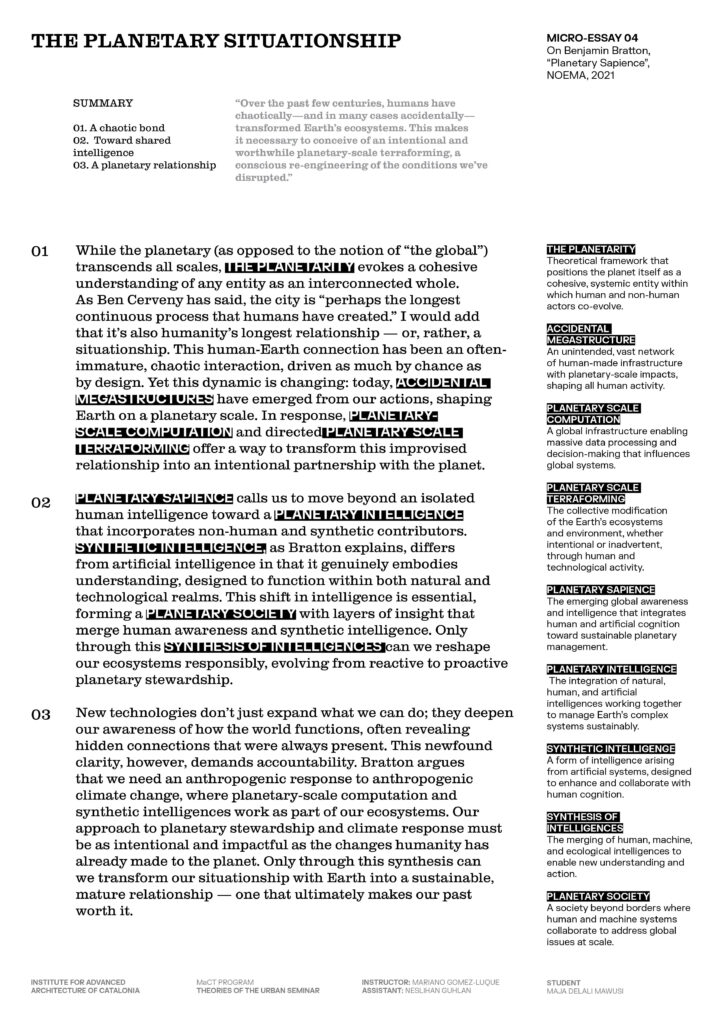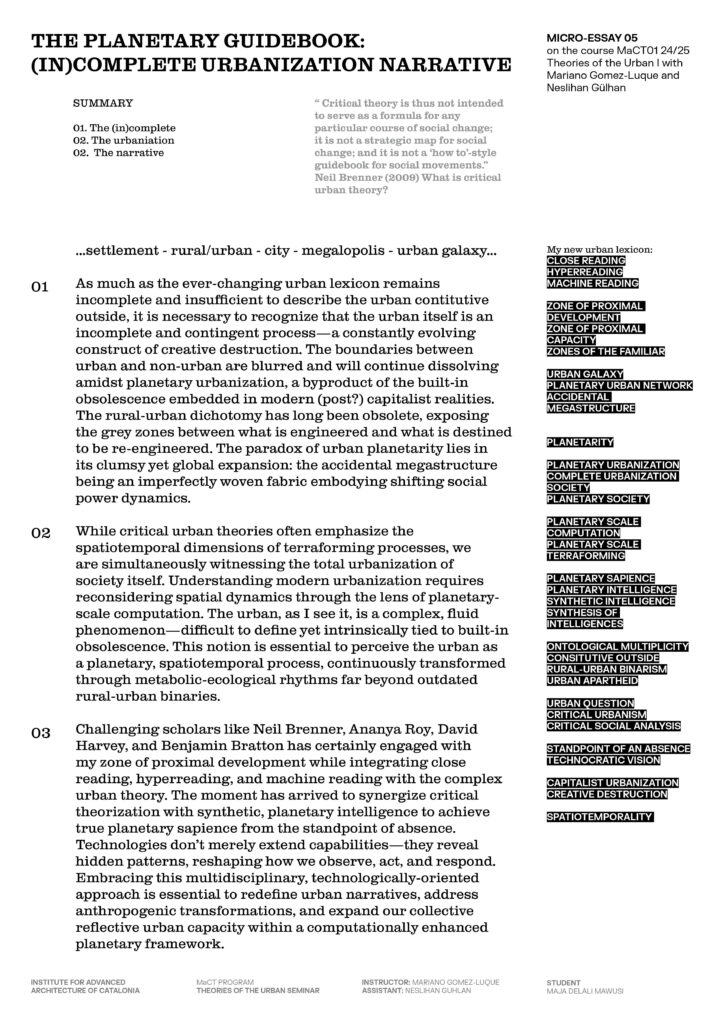“ Critical theory is thus not intended to serve as a formula for any particular course of social change;
it is not a strategic map for social change; and it is not a ‘how to’-style guidebook for social movements.”
Neil Brenner (2009) What is critical urban theory?
THE STATEMENT
…settlement – rural/urban – city – megalopolis – urban galaxy…
As much as the ever-changing urban lexicon remains incomplete and insufficient to describe the urban constitutive outside, it is necessary to recognize that the urban itself is an incomplete and contingent process—a constantly evolving construct of creative destruction. The boundaries between urban and non-urban are blurred and will continue dissolving amidst planetary urbanization, a byproduct of the built-in obsolescence embedded in modern (post?) capitalist realities. The rural-urban dichotomy has long been obsolete, exposing the grey zones between what is engineered and what is destined to be re-engineered. The paradox of urban planetarity lies in its clumsy yet global expansion: the accidental megastructure being an imperfectly woven fabric embodying shifting social power dynamics.
While critical urban theories often emphasize the spatiotemporal dimensions of terraforming processes, we are simultaneously witnessing the total urbanization of society itself. Understanding modern urbanization requires reconsidering spatial dynamics through the lens of planetary-scale computation. The urban, as I see it, is a complex, fluid phenomenon—difficult to define yet intrinsically tied to built-in obsolescence. This notion is essential to perceive the urban as a planetary, spatiotemporal process, continuously transformed through metabolic-ecological rhythms far beyond outdated rural-urban binaries.
Challenging scholars like Neil Brenner, Ananya Roy, David Harvey, and Benjamin Bratton has certainly engaged with my zone of proximal development while integrating close reading, hyperreading, and machine reading with the complex urban theory. The moment has arrived to synergize critical theorization with synthetic, planetary intelligence to achieve true planetary sapience from the standpoint of absence. Technologies don’t merely extend capabilities—they reveal hidden patterns, reshaping how we observe, act, and respond. Embracing this multidisciplinary, technologically-oriented approach is essential to redefine urban narratives, address anthropogenic transformations, and expand our collective reflective urban capacity within a computationally enhanced planetary framework.
THE GLOSSARY – NEW URBAN LEXICON
CLOSE READING
HYPERREADING
MACHINE READING
ZONE OF PROXIMAL DEVELOPMENT
ZONE OF PROXIMAL CAPACITY
ZONES OF THE FAMILIAR
URBAN GALAXY
PLANETARY URBAN NETWORK
ACCIDENTAL MEGASTRUCTURE
PLANETARITY
PLANETARY URBANIZATION
COMPLETE URBANIZATION SOCIETY
PLANETARY SOCIETY
PLANETARY SCALE COMPUTATION
PLANETARY SCALE TERRAFORMING
PLANETARY SAPIENCE
PLANETARY INTELLIGENCE
SYNTHETIC INTELLIGENCE
SYNTHESIS OF INTELLIGENCES
ONTOLOGICAL MULTIPLICITY
CONSITUTIVE OUTSIDE
RURAL-URBAN BINARISM
URBAN APARTHEID
URBAN QUESTION
CRITICAL URBANISM
CRITICAL SOCIAL ANALYSIS
STANDPOINT OF AN ABSENCE
TECHNOCRATIC VISION
CAPITALIST URBANIZATION
CREATIVE DESTRUCTION
SPATIOTEMPORALITY
COLLECTION OF ESSAYS
